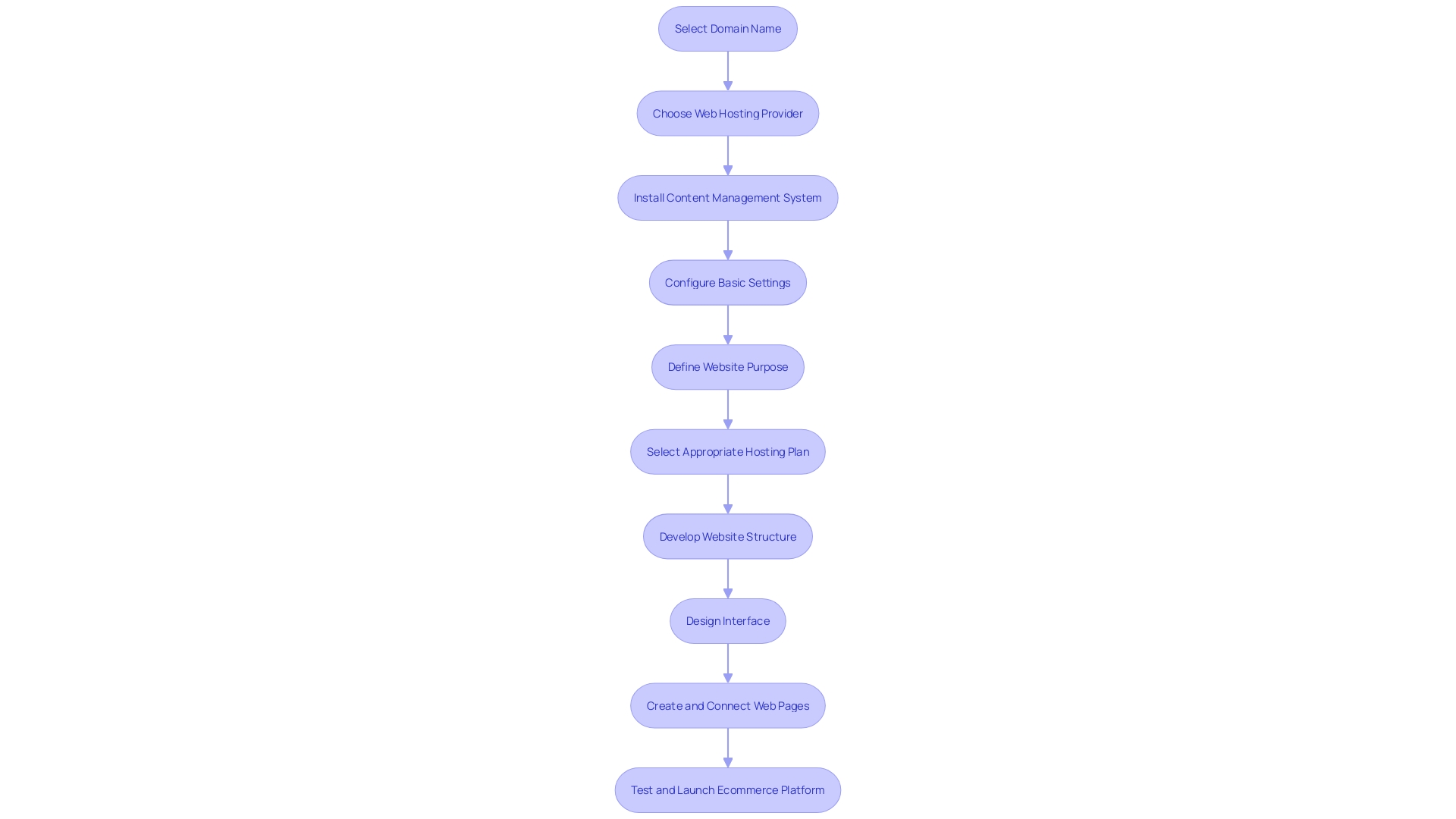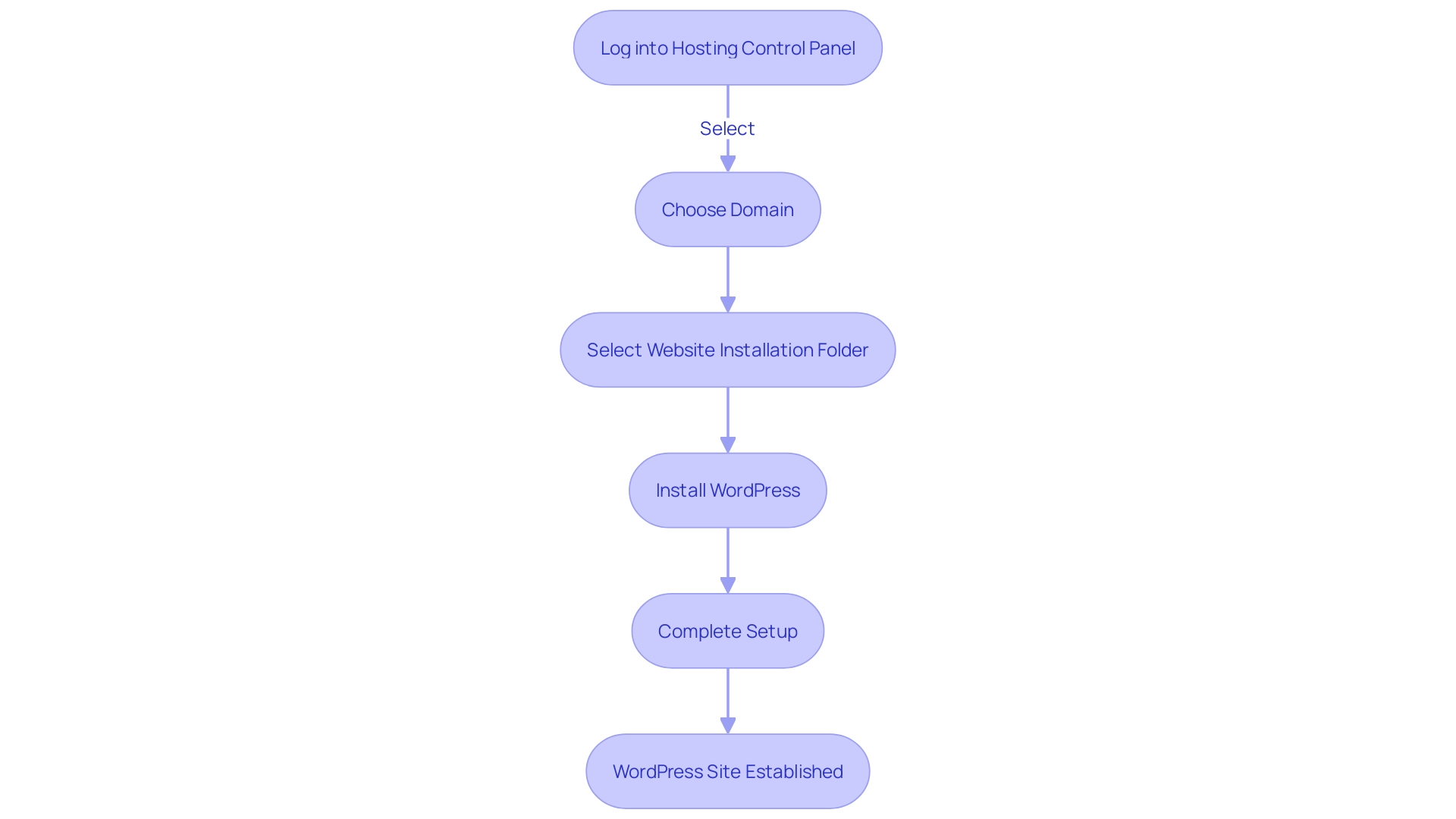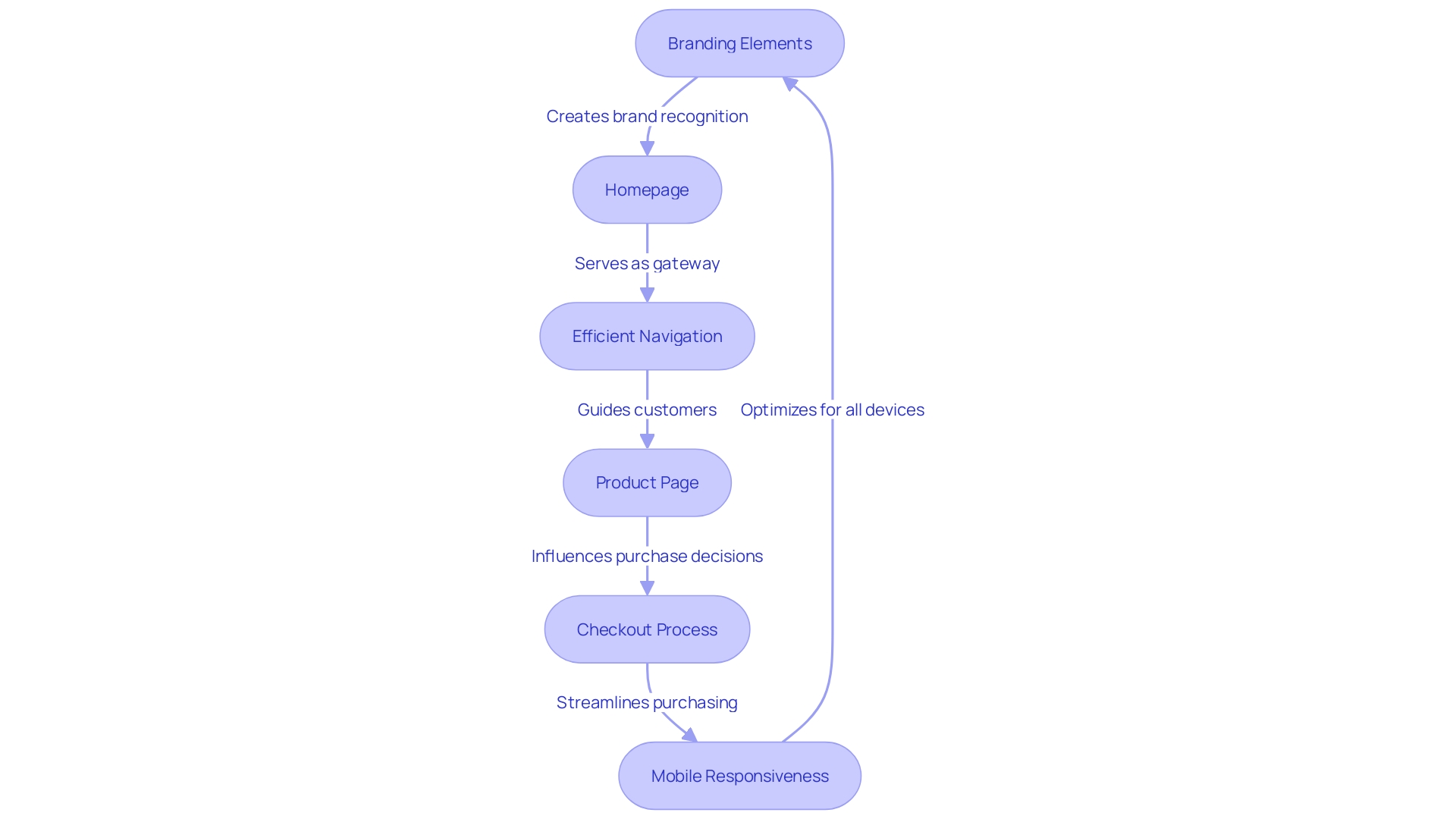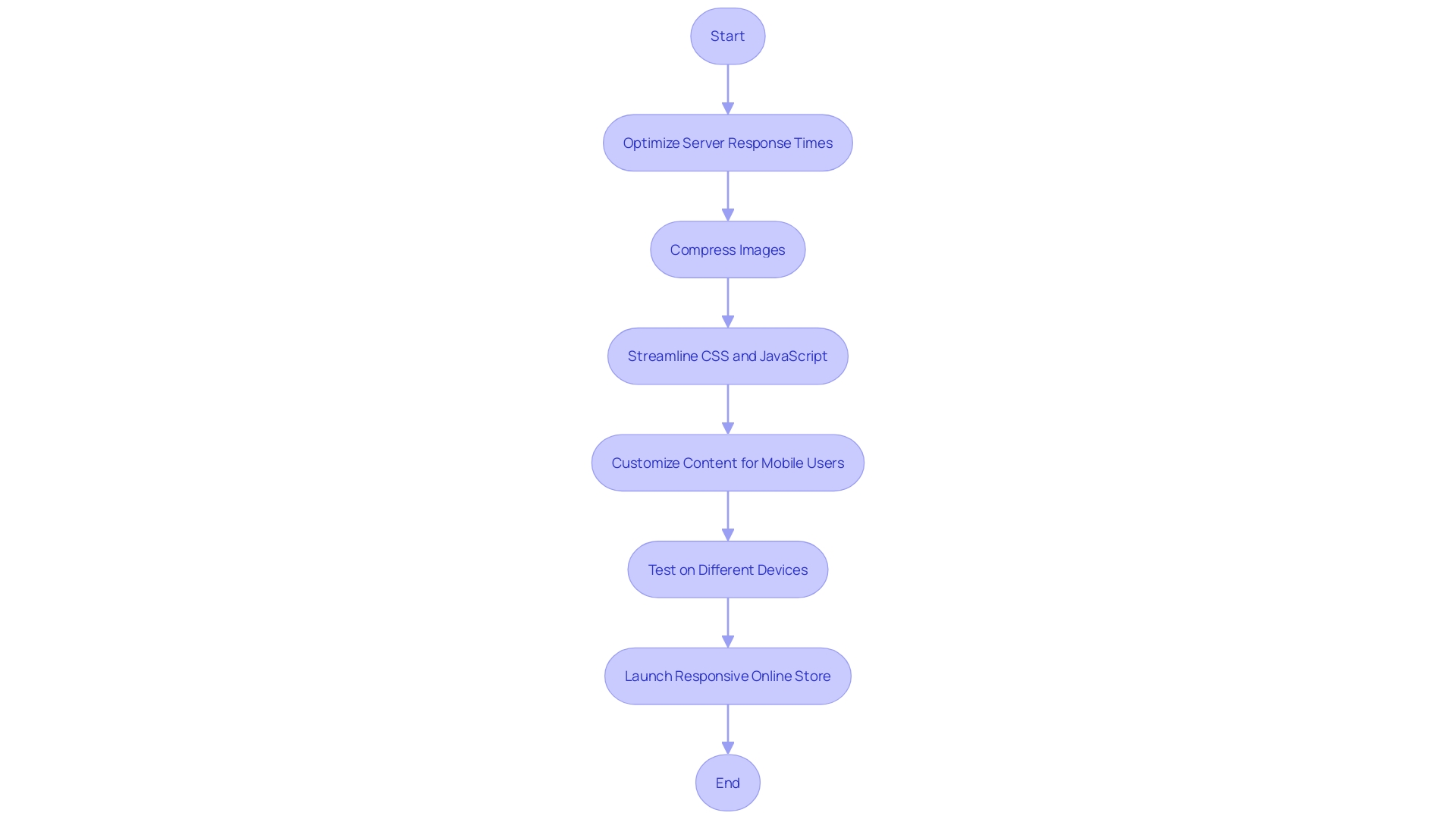Introduction
WordPress has become a popular choice for e-commerce website development due to its numerous benefits. With its intuitive interface and customizable templates, even those without technical expertise can easily manage and update their online stores. The extensive selection of themes and plugins available through WordPress allows businesses to tailor their websites to their brand and meet their specific requirements.
Additionally, WordPress's robust SEO tools help improve search rankings and increase visibility to potential customers. With its scalability and strong community support, WordPress is an outstanding choice for creating a successful online store. In this article, we will explore the steps involved in setting up a WordPress e-commerce website, installing WordPress on a hosting provider, selecting the right e-commerce plugin (such as WooCommerce), configuring WooCommerce, choosing a suitable e-commerce theme, adding products and services, customizing your storefront, enhancing your website with essential plugins, implementing SEO strategies, optimizing your website for mobile, and considering security and performance aspects.
By following these steps and leveraging the power of WordPress, you can create a dynamic and effective e-commerce website that stands out in the competitive online marketplace.
Why Choose WordPress for Ecommerce Website Development
Choosing WordPress as your platform for e-commerce design and development brings an array of benefits, each aimed at enhancing your online presence and business potential. The user-friendly interface of the popular content management system simplifies website management, enabling even those without technical expertise to effortlessly update and maintain their digital storefront. This is evident in the experience of Jolie Karno, a wood-turner from Oakland, who found the customizable templates and continuous support from a popular website builder enabled her to launch her online store with ease, highlighting her handcrafted wood products.
The wide range of themes and plugins available through the popular content management system caters to e-commerce needs, providing a tailored appearance and functionality that aligns with your brand and business requirements. Moreover, the powerful SEO tools of this platform aid in improving the search rankings, broadening the visibility to potential customers.
For businesses anticipating growth, the scalability of a certain content management system is a key feature. It ensures that expanding product lines and increased traffic can be managed without sacrificing website performance. The platform's flexibility was recently emphasized by a significant contribution from over 600 individuals globally in the release of version 6.4, demonstrating the community's dedication to ongoing improvement.
Furthermore, the community support of the popular content management system is unmatched, comprising of developers and users who provide aid and exchange knowledge, as demonstrated by the recent announcement from Beau Lebens, Head of Engineering for Woo, outlining upcoming improvements to WooCommerce that prioritize developer experience and platform investment.
Ultimately, if you're starting a new venture or looking to upgrade your current e-commerce presence, the combination of user-friendliness, customization options, SEO proficiency, scalability, and strong community backing found in the WordPress platform makes it an outstanding choice for crafting a successful online store.
Step 1: Setting Up Your WordPress Ecommerce Website
Initiating the development of an ecommerce website entails a sequence of foundational measures to ensure you have a sturdy platform for your online store. Start by selecting a domain name that is both catchy and relevant to your brand, setting the stage for your digital presence. Next, selecting a web hosting provider is crucial; give priority to those that provide excellent performance and strong security, particularly those with robust support for website content management system integrations.
Once your domain and hosting are set up, proceed with the installation of the content management system. Many hosting services provide one-click installations, simplifying this step. After WordPress is up and running, it's time to configure the basic settings. This includes your site title, tagline, and timezone, among others. These initial configurations are essential as they lay the groundwork for a seamless and tailored ecommerce experience for your visitors.
Take into account the achievements of businesses like Casa Bikes or Concepto, which have utilized the potential of a popular content management system to establish a solid online footprint, serving their distinct markets. Moreover, stay informed about the latest WordPress developments, such as the Gutenberg 16.8 release and the State of the Word address, to ensure your ecommerce site takes advantage of the most recent enhancements and innovations.
Remember, your ecommerce platform is not just a compilation of web pages; it's a digital environment designed to engage and interact with your audience. By following these steps, you'll be well on your way to creating a dynamic and effective ecommerce website that resonates with your customers and stands out in the competitive online marketplace.

Step 2: Installing WordPress on a Hosting Provider
Establishing your site using one of the world's most widely used content management systems is not only a matter of convenience, but also a chance to harness the flexibility and capabilities. Using the platform, you can create diverse and rich web experiences similar to the Ford Foundation's Reimagine Recovery project, which showcases how to envision a more equitable future. Thanks to the user-friendly block editor, you can publish complex and compelling stories with ease, without needing to rely on a developer for every change.
To get your WordPress site online, start with these essential steps:
- Log into your hosting provider's control panel, often referred to as cPanel.
- Navigate to the section labeled 'WordPress' or 'Website.'
- Select the domain you desire to be associated with your website.
- Choose the folder for your website installation. For direct access from your main domain (e.g., www.yourwebsite.com), keep the directory field empty.
- Click 'Install' and follow the prompts to complete the setup.
After installation, managing your site's content is straightforward, thanks to the user-centric interface of this platform. This simplicity is a factor in the widespread acceptance of the platform throughout the internet.
To demonstrate the influence of a popular content management system on the digital environment, take into account the Ford Foundation, which revamped its online image to better engage with its target audience. By changing their platform, they were able to increase their content production and optimize their publishing process, going from a few pieces of content a month to several per week.
With the State of the Word 2023 approaching, and the recent release of Gutenberg 16.8 and the website-building platform 6.4—crafted by over 600 contributors from at least 56 countries—it's clear that the popular content management system is continuously evolving to meet the needs of its vast user base. The rapid adoption of new versions of a popular content management system and the anticipation of a new internet protocol point towards a future where this system not only simplifies the creation of online pages but also drives innovation in the enterprise space.
As you click the 'Install' button for your new site, you're not just setting up a web page; you're joining a worldwide community that's shaping the future of the internet.

Step 3: Selecting an Ecommerce Plugin (WooCommerce)
When building an e-commerce store, the right infrastructure is key to ensuring a seamless and engaging user experience. For those utilizing WordPress, WooCommerce emerges as the preferred e-commerce plugin, transforming an ordinary online platform into a dynamic online store. To get started, simply log into your WordPress dashboard and navigate to the 'Plugins' section. There, click 'Add New' and enter 'WooCommerce' in the search bar. Upon finding the WooCommerce plugin, click 'Install Now' and follow up by activating the plugin.
Once activated, WooCommerce offers a setup wizard that guides you through crucial configurations like currency, payment gateways, and shipping options. Embracing WooCommerce's capabilities means tapping into a platform that fuels a significant portion of the web—WordPress powers 43.4% of all websites and overwhelmingly dominates the CMS market with a 62.5% market share. Its immense popularity is attributed to its flexibility and user-friendliness, coupled with an extensive library of themes and plugins.
Businesses like Nets have leveraged similar platforms to present complex data in accessible, user-friendly formats. As an instructional designer at eWyse Agency mentioned, the goal is to transform technical tables and schemes into compelling content that encourages user exploration. This idea of user-centric design is echoed in WooCommerce's ongoing enhancements, as outlined by Beau Lebens, Head of Engineering for Woo. The platform's focus on REST API improvements, extensibility, and checkout process optimization underscores its commitment to developers and users alike.
As you begin to establish your WooCommerce store, keep in mind that it's not only about the technical setup—it's about creating a connection that resonates with users and aligns with your brand's vision. With WooCommerce's robust ecosystem, including expert support and a dedication to continuous improvement, your online store is well-positioned to thrive in the bustling e-commerce landscape.
Step 4: Configuring WooCommerce for Your Ecommerce Website
Configuring WooCommerce is a crucial step in tailoring your e-commerce platform to meet your unique business needs. To ensure a smooth and efficient setup, follow these essential configuration stages:
-
General Settings: Establish the foundational settings of your online store, including the location of your store, where you are willing to ship products, and the handling of sales tax to align with regional laws and customer expectations.
-
Payment Gateways: Select and set up payment gateways like PayPal, Stripe, or credit card processing to offer secure and convenient payment options for your customers. Keep in mind the transaction fees and consider any additional extensions that may be required for seamless financial operations.
-
Shipping Options: Implement shipping configurations by defining shipping zones, establishing rate calculations, and choosing shipping methods that cater to your customer base and operational capabilities, as advised by WooCommerce experts.
-
Product Settings: Adjust settings for managing your inventory, defining product variations, and setting up digital downloads to maintain accurate stock levels and offer a variety of products, ensuring operational efficiency and customer satisfaction.
-
Customize your storefront by choosing themes, colors, and branding elements that reflect your brand's identity and offer an appealing and user-friendly shopping journey for your customers.
By meticulously setting up WooCommerce, you can enhance the shopping journey, reinforcing the message from the WooCommerce team about their ongoing dedication to enhancing the core platform and the overall developer involvement. Moreover, implementing these settings with regard to your team's technical expertise can result in a more efficient and manageable e-commerce solution, as emphasized by the narrative content of the Ford Foundation's immersive web experiences and the capabilities of the block editor.
Embrace these steps with the knowledge that the platform and plugin offer an extensive ecosystem, supported by an engaged and collaborative community, as evidenced by the insights shared by Beau Lebens, Head of Engineering for Woo, and the diverse expertise showcased in conversations with builders and creators around the world.
Step 5: Choosing a Suitable Ecommerce Theme
Choosing the perfect ecommerce theme is crucial for the success of your website built on the platform. To pinpoint the most fitting theme, commence by crystallizing your must-have features, layout preferences, and aesthetic essentials. Delve into esteemed theme repositories such as ThemeForest or WooCommerce's official collection, searching for themes congruent with your specifications.
Ensure the theme's synchronous operation with WooCommerce and other pivotal plugins. Insightful user feedback offers a glimpse into the theme's caliber and operational prowess. Utilize theme demonstrations to visualize the theme's aesthetics and functionality.
Upon discovering a theme that resonates with your brand's ethos, proceed to installation and personalization, infusing your brand identity into the design, thereby cultivating a captivating online presence.
Step 6: Adding Products and Services to Your Ecommerce Store
Incorporating products and services into your e-commerce site on a popular content management system for building websites is a vital part of constructing your online store. Begin by accessing your WordPress dashboard and navigating to the 'Products' section, where you'll select 'Add New'. Here you'll input the product or service details, including the name, description, pricing, and images that showcase what you're offering.
Next, cater to customer preferences by setting up variations for attributes like size or color. To enhance discoverability, organize your inventory with relevant categories and tags, ensuring they align with internal search practices and SEO optimization.
Inventory management is crucial; configure stock statuses and quantities to keep customers informed. Moreover, shipping and tax settings for each product must be clearly defined to avoid any checkout confusion.
Once satisfied with the product listing details, hit the 'Publish' button to make the product available to your customers. Bear in mind, comprehensive and strategic product information management can greatly impact the customer journey and result in increased sales conversions.
As you repeat these steps for each product, keep in mind the importance of a well-organized and user-friendly website. In an evolving digital landscape, where e-commerce trends continuously shift and consumer behaviors adapt, maintaining an up-to-date and accessible online store will keep you competitive and ready to capitalize on market opportunities.
Step 7: Customizing Your Ecommerce Storefront
Improving your ecommerce storefront is not only about aesthetics—it's about creating a customer-centric journey that connects with your brand identity and simplifies the path to purchase. Branding is your digital handshake; incorporating your logo, tagline, and brand colors is vital to make an indelible mark in the consumer's mind. A well-designed Homepage serves as the gateway to your offerings, spotlighting featured products and promotions while embodying your brand story.
Efficient navigation is the foundation of user interaction, guiding potential customers through your digital landscape smoothly, reducing obstacles and encouraging exploration. The Product Page is where your goods shine; choosing a layout that magnificently displays images, descriptions, and reviews can sway purchasing decisions.
The Checkout Process is the final hurdle in the customer's journey. Streamlining this process is crucial as it has a direct impact on cart abandonment and conversion rates—key performance indicators in the ecommerce space. And let's not forget Mobile Responsiveness—with mobile browsing accounting for a significant chunk of internet traffic, ensuring your site is optimized for all devices is an imperative.
City Bird's journey, leveraging Lightspeed Retail POS, is a testament to the power of a unified platform in overcoming inventory and sales challenges. Meanwhile, innovations like the checkout-free Dublin Town To Go store, herald the evolution of retail, demonstrating the significance of staying up to date with emerging technologies to improve customer satisfaction.
Remember, in the realm of ecommerce, your storefront is more than a shop window—it's a dynamic space that must evolve with technology, trends, and consumer expectations. From the first click to the final purchase, every element should be meticulously crafted to deliver an engaging and seamless shopping experience.

Essential Plugins for Enhancing Your Ecommerce Website
When optimizing your WordPress e-commerce platform for peak performance, leveraging the right plugins is crucial. A powerhouse SEO tool such as Yoast SEO can elevate your site's search engine rankings by ensuring it adheres to the latest optimization standards and practices. Considering that Google dominates more than 93% of the market share in search engines, aligning your online platform with its guidelines can greatly enhance your visibility and attract more visitors to your store.
To maintain fast loading times for your website, a plugin such as WP Super Cache can be crucial, as it caches static files to enhance page speed, which is important given that most online interactions commence with a search engine. Fast loading times contribute to a positive user experience, encouraging visitors to stay longer and engage more with your content.
In the realm of security, Akismet is your frontline defense against spam, safeguarding your website from unwanted comments and form submissions. Meanwhile, UpdraftPlus offers peace of mind with automated and reliable backups of your website data, ensuring you're prepared for any contingency.
Lastly, integrating MonsterInsights connects your e-commerce platform with Google Analytics, allowing you to track and analyze visitor behavior. This data is invaluable for understanding your audience's needs and preferences, enabling you to make informed decisions about your product offerings and marketing strategies.
Each of these plugins contributes to a robust e-commerce ecosystem, providing you with the tools to enhance functionality, improve security, and boost overall site performance.
SEO Tips for Your WordPress Ecommerce Website
Effective SEO strategies are crucial for any WordPress e-commerce platform aiming to increase organic traffic. To outshine competitors and capture your target audience's attention, consider these actionable tactics:
-
Conduct Thorough Keyword Research: Delve into identifying keywords that possess high search volume, low competition, and align with the purchase intent of your audience. Incorporate these keywords thoughtfully into your content, product descriptions, and meta tags to enhance visibility.
-
Craft Optimized Product Titles and Descriptions: Emphasize creating unique, keyword-rich, and compelling product titles and descriptions to engage potential customers and improve search rankings.
-
Generate and Submit XML Sitemap: A sitemap guides search engines through your website, facilitating better crawling and indexing of your pages, which is pivotal for your online presence.
-
Optimize Images: Compressing images, adding relevant alt tags, and using descriptive filenames can significantly contribute to faster page loading times and improved SEO.
-
Implement User-Friendly URLs: Clean, concise, and keyword-inclusive URLs can make a considerable difference in how search engines and users perceive your webpage.
-
Build Quality Backlinks: Engage in guest blogging, social media promotion, and influencer collaborations to accrue high-quality backlinks, thereby boosting your website's authority and search rankings.
These strategies, when implemented successfully, can result in greater visibility in search results and a larger influx of organic traffic to your e-commerce platform.
Mobile Optimization for Ecommerce Websites
Creating an online store with a responsive design guarantees that your website adjusts to different screen sizes and devices, offering a uniform browsing journey. Navigation on mobile must be streamlined; clear menus and intuitive controls are non-negotiable for users who often seek immediate answers and wish to engage with brands on-the-go. Speed is also paramount. Compressing images, optimizing server response times, and streamlining CSS and JavaScript can significantly reduce load times, which is critical since mobile users expect rapid access to information. This is supported by the growing importance of mobile devices in consumer behavior. A simplified checkout process is another key area. Reducing the number of form fields and incorporating mobile payment solutions can help streamline purchases for users shopping on their devices. Customizing content for mobile users, with brief product descriptions and bigger images, can enhance the mobile shopping journey, ensuring that the quality and speed of image loading are balanced to promote exploration and purchase. Implementing a mobile-first approach can result in more intuitive and accessible designs, offering an optimal user interaction on smaller screens. This approach is essential as the dominance of mobile devices in digital interaction continues to rise.

Ecommerce Website Security and Performance Considerations
Mastering the intricacies of ecommerce development on the WordPress platform necessitates a comprehensive strategy to guarantee the safety and efficiency, crucial for protecting customer information and facilitating a seamless user experience. To keep your website at the forefront of reliability and efficiency:
-
Regular Updates: Consistently updating WordPress core, themes, and plugins is non-negotiable. This proactive measure not only strengthens your online presence with the latest security patches but also introduces performance improvements that keep your web platform running smoothly.
-
Secure Hosting: Opting for a hosting provider that prioritizes security is a cornerstone of a robust ecommerce platform. Features to look for include SSL certificates for data encryption, firewalls to fend off malicious threats, and regular backups for disaster recovery.
-
Trusted Payment Gateways: The integrity of your customer's payment information is paramount. Implementing secure payment gateways with a proven track record is essential to maintaining trust and ensuring transactions are safeguarded.
-
Performance Optimization: A streamlined website is a high-performing website. Methods like minimizing server requests, compressing images for quicker loading, and utilizing caching mechanisms can greatly improve speed and responsiveness.
-
SSL Certification: An SSL certificate does more than encrypt customer data; it reassures visitors that their browsing session is secure, which is crucial to the user journey.
Embracing these strategies paves the way for a trustworthy and efficient ecommerce presence. Inspired by the digital transformation of platforms like Chess.com, which serves millions daily by maintaining a robust IT infrastructure, ecommerce sites can similarly strive for excellence. Chess.com's dedication to delivering a seamless experience to its global community underscores the importance of a solid digital foundation.
Recent advancements in the content management system, such as the release of Gutenberg 16.8, which introduced improvements to user interface components, and the global engagement seen in events like State of the Word, highlight the ongoing evolution of the platform. With more than 45.8% of all websites powered by WordPress, it's clear that its influence continues to grow, reinforcing the need for ecommerce sites to stay on top of development practices.
Through these actions, storefronts not only protect themselves and their customers but also position themselves to thrive in the ever-evolving landscape of online commerce.
Conclusion
In conclusion, WordPress is an excellent choice for creating a successful e-commerce website. Its user-friendliness, customization options, SEO proficiency, scalability, and strong community support make it a reliable platform.
To set up your WordPress e-commerce website, follow the steps outlined in this article. Choose a domain name, select a reliable web hosting provider, and install WordPress. Configure the basic settings and stay informed about the latest WordPress developments.
Selecting the right e-commerce plugin, such as WooCommerce, is crucial. Configure WooCommerce by establishing general settings, payment gateways, shipping options, product settings, and customizing your storefront.
Choose a suitable e-commerce theme that aligns with your brand. Add products and services to your store, organize inventory, and define shipping and tax settings.
Customize your storefront to provide a customer-centric experience. Incorporate branding elements, design an engaging homepage, ensure easy navigation, optimize product pages, streamline the checkout process, and make your website mobile-friendly.
Enhance your WordPress e-commerce website with essential plugins like Yoast SEO, WP Super Cache, Akismet, UpdraftPlus, and MonsterInsights. These plugins improve functionality, security, and overall site performance.
Implement effective SEO strategies, optimize your website for mobile, and consider security and performance aspects to increase visibility and user experience.
By leveraging the power of WordPress and following these steps, you can create a dynamic and effective e-commerce website. Stay updated on WordPress developments to ensure your site thrives in the ever-changing digital landscape.
Start building your dynamic and effective e-commerce website with WordPress today!





